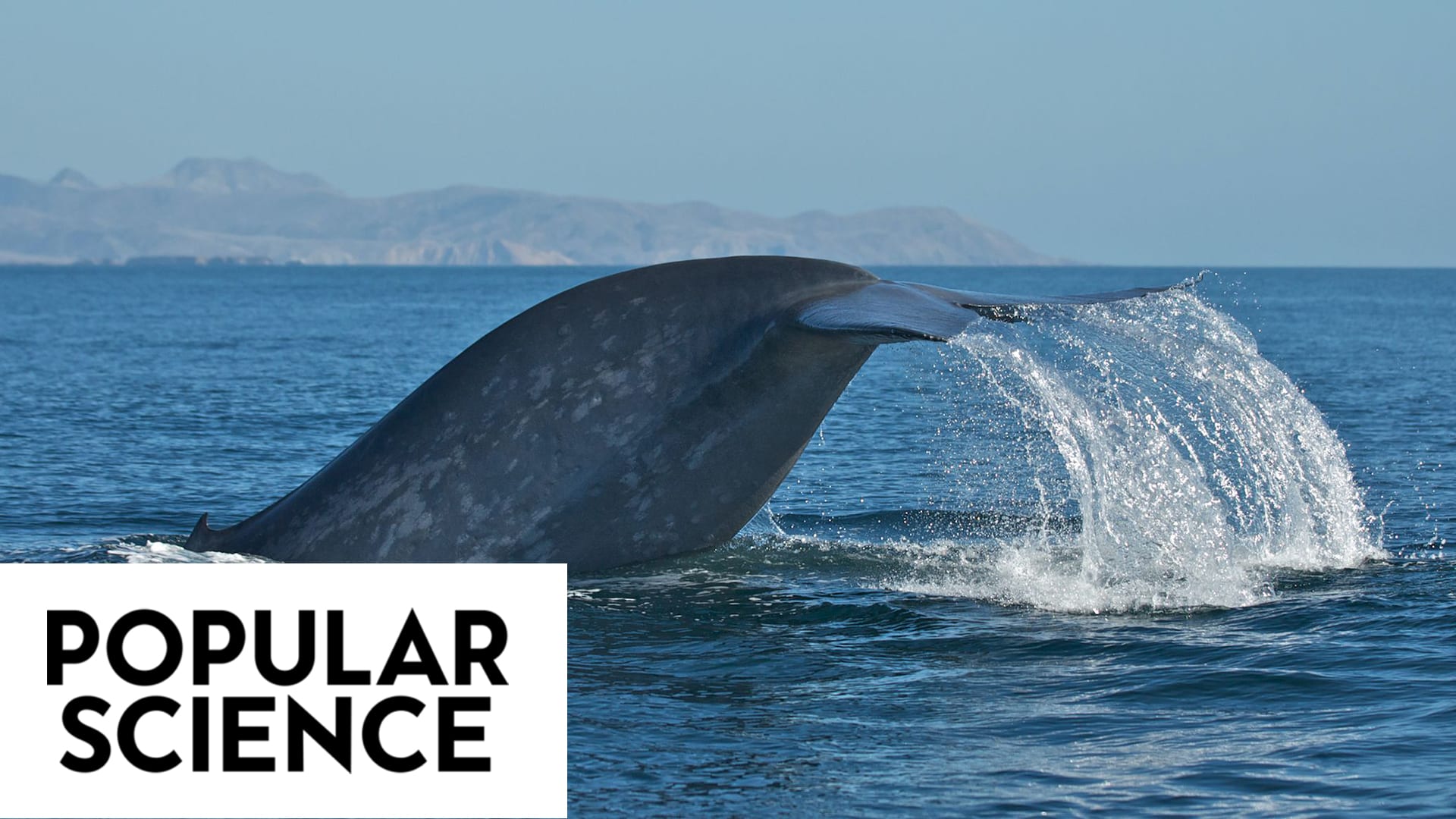WHOI Collaborates on Ocean Detection System to Help Reverse Whale ‘Roadkill’
Thanks to WHOI-developed acoustic buoy technology recently featured in Popular Science, collisions between whales and ships could become a thing of the past.
WHOI has collaborated with the Benioff Ocean Initiative, Scripps Institution of Oceanography, the University of California Santa Barbara and the University of Washington, among others, to launch Whale Safe, a detection system that may help prevent large ship collisions with the ocean's behemoths along the California coast.
Data scientists at WHOI were part of a team that developed a whale identification algorithm using more than 4,500 recordings of blue and fin whales sounds taken from underwater microphones at over a dozen locations over 14 years.

Ship strikes are a leading cause of death to whales around the globe. (Craig Hayslip, © Popular Science)
The resulting whale call library is matched to sounds coming channel, allowing the system to identify new whale calls and signaling the presence of whales.
The project is the first of its kind to combine acoustic models such as WHOI's identification algorithm along with habitat data to provide a holistic snapshot of the marine mammal's presence in the Santa Barbara Channel.
Whales have made a remarkable but slow comeback along the California coast, but are still frequently killed in collisions with large ships. Ship strikes remain a leading cause of death to whales around the globe, and in some places, like California, they are on the rise.
